Accepted Scientific Name: Gibbaeum shandii (N.E.Br.) N.E.Br.
Gard. Chron. 1922, Ser. III. lxxii. 129.

Gibbaeum pubescens subs. shandii (Gibbaeum shandii) Photo by: Valentino Vallicelli
Origin and Habitat: Swelledam, West Cape, South Africa.
Habitat & ecology: Grows on quartzite slopes where it forms conspicuous clumps. It recal plants of the genus Argyroderma and like them, also favour quartz fields. The similar growth form are almost certainly the result of their similar lifestyles. The occurrence of white plants on white quartz-strewn ground is often quoted as a mode of concealment.
Synonyms:
Common Names include:
ENGLISH: Beak of a Shark
AFRIKAANS (Afrikaans): Haaibekkie
Description: It is a dwarf, perennial, anisophylous, cushion forming succulent. Its body resembles a shark's head. formed by 1 long finger-shaped leaf & 1 shorter leaf. It a low winter growing species, although it will grow taller in cultivation than it does in the wild. Up to 5 cm tall and 10 (or more) cm wide.
Stem: Short, woody with remains of old leaves.
Leaves: Fleshy, dark green to green-brown or silvery/grey, paired and resembling a shark's head, the longer leaves finger-shaped keeled, the shorter appressed with a neat cut margin visible close to the the longer leaf. Every year a few new leaves grow from the central stem. The epidermis is covered by characteristic minuscule stellate hairs that give it a silver/velvety appearance.
Flowers: Daisy-like, striking purple, pink or white and long lasting. Filamentous staminodes white.
Fruits: 6 loculed capsules. Stalk terete, bottom part funnel shaped with a conical tip.
Blooming season: Winter.
Remarks: Some authors synonymize this taxon with the similar Gibbaeum pubescensSN|14659]]SN|14659]], but it differs slightly for its stellate hairs and the conical tops of the capsules.
Notes: Various species of the genus Gibbaeum are called in Afrikaans, ‘Haaibekkie’. In English this means ‘beak of a shark’. This very apt name is derived from the shape of the two leaves that together form the plant growth. They differ in size and because these leaves grow closely together the fissure of most species looks exactly like the beak of a shark, though without the teeth of course.
Bibliography: References and further reading
1) Oliver, I.B. “Grow succulents.” Kirstenbosch Gardening Series. National Botanical Institute, Cape Town.
2) Smith, G.F., Chesselet, P., Van Jaarsveld, E.J., Hartmann, H., Hammer, S., Van Wyk, B-E., Burgoyne, P., Klak, C. & Hubert, K. “Mesembs of the world.” National Botanical Institute, Pretoria.1998.
3) Doreen Court “Succulent Flora of Southern Africa” CRC Press, 01/giu/2000
4) Heidrun E. K. Hartmann “Aizoaceae: F-Z” Springer, 2001
5) Burgoyne, P.M. 2006. Gibbaeum shandii N.E.Br. National Assessment: "Red List of South African Plants" version 2013.1. Accessed on 2014/02/10
6) James Cullen, Sabina G. Knees, H. Suzanne Cubey “The European Garden Flora Flowering Plants: A Manual for the Identification of Plants Cultivated in Europe, Both Out-of-Doors and Under Glass - Casuarinaceae to Aristolochiaceae” Cambridge University Press, 11/ago/2011
7) Hermann Jacobsen, Vera Higgins “Succulent Plants: Description, Cultivation and Uses of Succulent Plants, Other Than Cacti” Williams and Norgate, Limited, 1935
8) Jacobsen. “Handbook of succulent plants” 1328 (1960)
9) H. Herre “The genera of the Mesembryanthemaceae” Tafelberg-Uitgewers Beperk, 1971
10) Gideon Smith u.a. (Hrsg.): “Mesembs of the World: Illustrated Guide to a Remarkable Succulent Group.” Briza Publications, 1998
11) Nicholas Edward Brown “Mesembryanthemum and allied genera.” In: Journal of Botany, British and Foreign. Band 66, 1928, S. 171.
12) Goldblatt, P. and Manning, J.C. 2000. Cape Plants: A conspectus of the Cape Flora of South Africa. Strelitzia 9. National Botanical Institute, Cape Town.
13) Vlok, J. and Schutte-Vlok, A.L. 2010. Plants of the Klein Karoo. Umdaus Press, Hatfield.
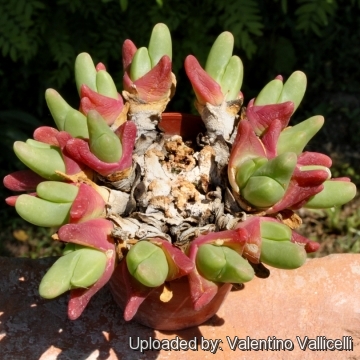 Gibbaeum pubescens subs. shandii (Gibbaeum shandii) Photo by: Valentino Vallicelli
Gibbaeum pubescens subs. shandii (Gibbaeum shandii) Photo by: Valentino Vallicelli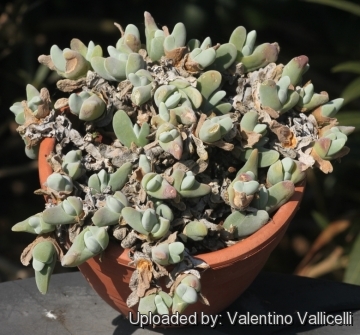 Gibbaeum pubescens subs. shandii (Gibbaeum shandii) Photo by: Valentino Vallicelli
Gibbaeum pubescens subs. shandii (Gibbaeum shandii) Photo by: Valentino Vallicelli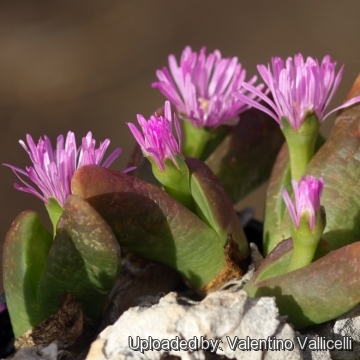 Gibbaeum pubescens subs. shandii (Gibbaeum shandii) Photo by: Valentino Vallicelli
Gibbaeum pubescens subs. shandii (Gibbaeum shandii) Photo by: Valentino Vallicelli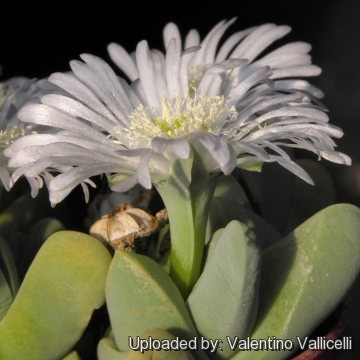 Gibbaeum pubescens subs. shandii (Gibbaeum shandii) Photo by: Valentino Vallicelli
Gibbaeum pubescens subs. shandii (Gibbaeum shandii) Photo by: Valentino Vallicelli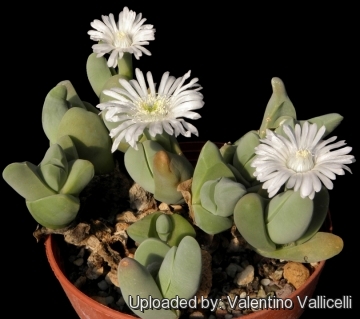 Gibbaeum pubescens subs. shandii (Gibbaeum shandii) Photo by: Valentino Vallicelli
Gibbaeum pubescens subs. shandii (Gibbaeum shandii) Photo by: Valentino Vallicelli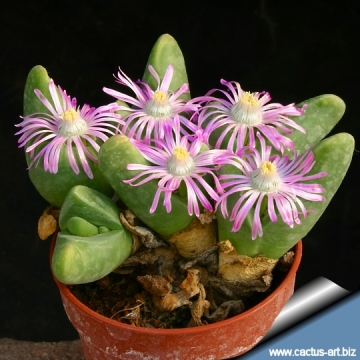 Gibbaeum shandii Kareevlakte. (Gibbaeum shandii) Photo by: Cactus Art
Gibbaeum shandii Kareevlakte. (Gibbaeum shandii) Photo by: Cactus Art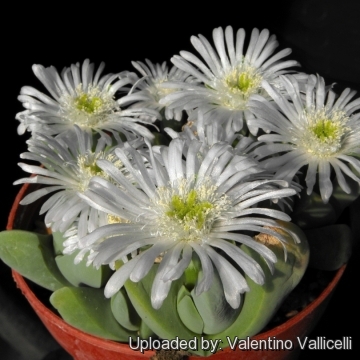 Gibbaeum pubescens subs. shandii (Gibbaeum shandii) Photo by: Valentino Vallicelli
Gibbaeum pubescens subs. shandii (Gibbaeum shandii) Photo by: Valentino Vallicelli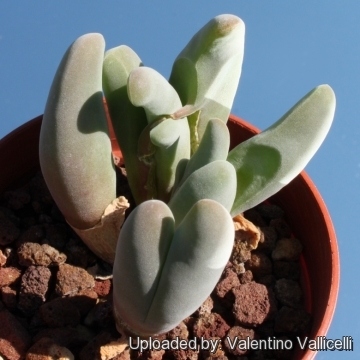 Gibbaeum pubescens subs. shandii (Gibbaeum shandii) Photo by: Valentino Vallicelli
Gibbaeum pubescens subs. shandii (Gibbaeum shandii) Photo by: Valentino VallicelliCultivation and Propagation: It is a "winter" grower which is most active from late winter until later spring and heading for summer dormancy, and notoriously difficult to grow because it rot very easily, but Gibbaeum velutinumSN|14358]]SN|14358]] is not so difficult in cultivation, keeps going over the summer too and don’t’ need very special care.
Soil: It grows best in sandy-gritty soil and requires good drainage as it is prone to root rot. It can grows outdoor in sunny, dry, rock crevices (protection against winter wet is required) It can also be cultivated in alpine house, in poor, drained soil.
Fertilization: Feed it once during the growing season with a fertilizer specifically formulated for cactus and succulents (poor in nitrogen), including all micro nutrients and trace elements diluted to ½ the strength recommended on the label. It thrives in poor soils and need a limited supplies of fertilizer to avoid the plants developing excess vegetation, which is easily attacked by fungal diseases.
Watering: The Gibbaeums thrive in dry and desert regions and are able to stand extended periods of drought and require careful watering. Water minimally in summer, only when the plant starts shrivelling, water more abundantly when they are growing in the autumn and spring, but let the soil dry between soaking. Requires little water otherwise its epidermis breaks (resulting in unsightly scars). If grown in a container, bottom watering by immersing the container is recommended. It must have very dry atmosphere.
Light: It needs a bright sunny or light shade exposure in winter, but keep cool and shaded in summer.
Hardiness: It prefer a very bright situation and require a minimum temperature 5°C (But will take a light frost and is hardy down to -7° C for short periods if it is in dry soil). USDA zones 9A – 11.
Uses: Container, rock garden.
Pests and diseases: It is vulnerable to mealybugs and rarely scale.
Propagation: Seed in autumn or (or rarely) cuttings. Take the cutting from a grown-up mother plant. Each cutting must contain one or more heads along with a fraction of root and permit to dry out a couple of days, lay it on the soil and insert the stem end partially into the soil. Try to keep the cutting somewhat upright so that the roots are able to grow downward. It is relatively difficult to root Gibbaeums from cuttings and generally pointless as well, so quick are they from seed.
Your Photos
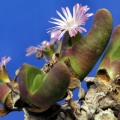
by Valentino Vallicelli

by Cactus Art
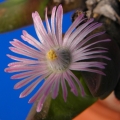
by Valentino Vallicelli
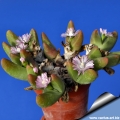
by Cactus Art
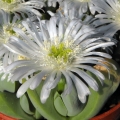
by Valentino Vallicelli
























